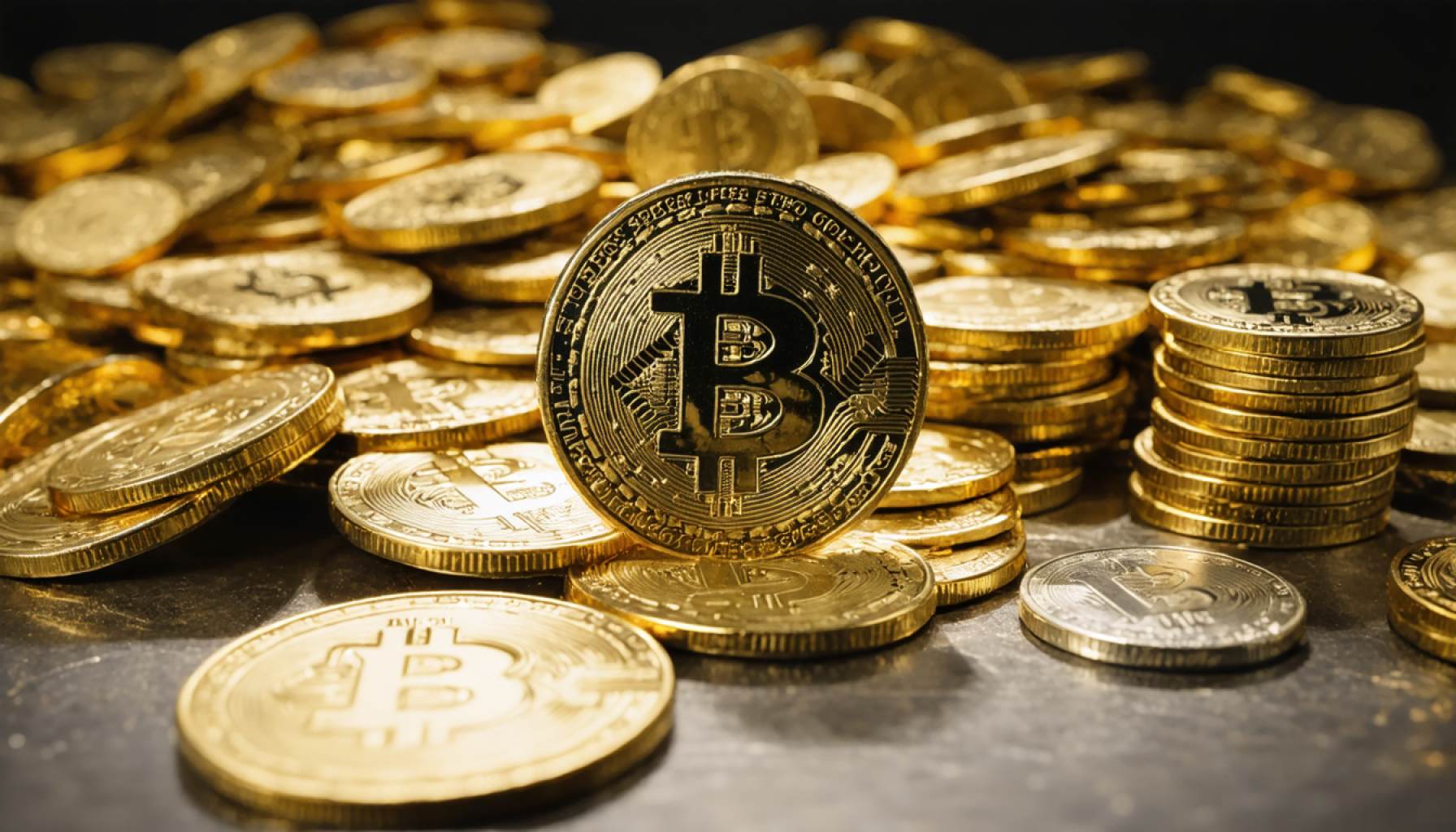- Rumors suggest a potential shift in U.S. financial strategy under a future Trump administration, considering trading gold reserves for Bitcoin.
- This idea sparks debate; critics emphasize the historical stability of gold, while some advocate for Bitcoin’s modern appeal.
- Edmund Moy, former U.S. Mint director, argues that liquidating gold could destabilize financial markets.
- The conversation highlights the tension between traditional assets and digital currencies in today’s economy.
- The proposal raises questions about financial security and how to balance old and new forms of wealth.
- The key concern: Is Bitcoin a reliable new ‘gold’, or a risky alternative in a volatile digital landscape?
- Sound financial policy should focus on long-term stability rather than short-term trends.
Rumors swirling like a tempest question whether the U.S., under a potential Trump administration, might attempt a historic financial gamble: trading its glorious gold reserves to stack up on Bitcoin. The mere whisper of such a strategy has sparked a mix of intrigue and skepticism across economic circles. Imagine the weighty doors of Fort Knox creaking open not to secure, but to redistribute the country’s tangible wealth into the digital ether. What’s really at stake here?
Leading industry voices argue fervently against such a move. Edmund Moy, the former director of the U.S. Mint, delivers a scathing critique on the idea. Gold, he insists, has served as the ultimate symbol of financial stability and trust throughout history. To liquidate this golden asset could quash the very market it supports, unleashing a flood on supply and unmet expectations.
Consider the implications of the United States devaluing its gold stock at $42.22 an ounce—a relic from a time when Richard Nixon uncoupled the dollar from the gold standard—only to revamp it to reflect market realities. Though this sounds straightforward, it invites a cascade of fiscal perplexities: How would the Federal Reserve respond, forced to reconcile the shift from a tangible asset to an amorphous digital one?
The audacious plan envisions leveraging these value adjustments to embolden a ‘Strategic Bitcoin Reserve’, positing Bitcoin as the digital iteration of gold. Proponents, like Bo Hines, underline cryptocurrency’s role as modern wealth’s fulcrum. Yet, critics point out that this transition threatens the solidity of America’s economic footing, relying primarily on digital assets’ notoriously erratic landscapes.
The conversation reveals much about the new intersections of finance and technology in today’s world. At its core, this debate forces a reassessment of how traditional assets stand alongside rising digital assets. The essence of financial credibility and security—the assets long relied upon—faces unprecedented questions of relevance and resilience amidst seismic market changes.
The takeaway? While the notion captivates with its blend of old-world wealth and new-age tech, the question remains: Is Bitcoin truly the Fort Knox of tomorrow or just an alluring specter in today’s volatile market landscape? Let this be a reminder: sound policy must not chase trends, but rather secure prosperity for future generations.
Could Bitcoin Replace Gold in the U.S. Treasury?
The potential shift of U.S. gold reserves into Bitcoin is causing waves of discussion across financial communities. While the idea is tempting to some, it carries significant risks that demand careful consideration.
The Historical Context of Gold
Gold has been synonymous with financial security and trust throughout history. Its physicality and scarcity are key reasons for its lasting value. Former U.S. Mint Director Edmund Moy fiercely criticizes any plan to replace gold with Bitcoin, emphasizing gold’s unshakable role in underpinning stability.
Bitcoin vs. Gold: A Comparison
Pros of Bitcoin:
– Decentralization: No single entity controls Bitcoin, reducing risks related to centralized failure.
– Portability & Accessibility: Cryptocurrencies can be easily transferred anywhere in the world, offering unparalleled accessibility.
– Potential for High Returns: Bitcoin’s price volatility, while risky, has provided substantial returns in the past.
Cons of Bitcoin:
– Volatility: Bitcoin’s price is highly unpredictable, driven by speculation rather than intrinsic value.
– Regulatory Risks: Governments may impose regulations that could impact Bitcoin’s growth and usability.
– Security Concerns: While the blockchain is secure, exchange hacks and scams pose significant threats to investors.
Gold’s Strengths:
– Intrinsic Value: Its use in technology, jewelry, and as a monetary base offers intrinsic value.
– Stable Store of Value: Its price stability in tumultuous times is unmatched.
– Universal Acceptance: Gold is recognized globally as a secure asset.
How Would This Financial Shift Affect the Economy?
A move to transform gold reserves into Bitcoin could:
– Spark Market Volatility: Releasing large gold stocks would disrupt current markets, causing price instability.
– Force Policy Adaptations: The Federal Reserve and Treasury would need new strategies to manage digital currency reserves.
– Reassess Reserve Value: Current valuations at $42.22 per ounce could force recalibration to match real-world prices.
Market Forecasts & Industry Trends
The conversation around Bitcoin’s role as a national reserve is part of broader trends:
– Cryptocurrency Adoption: Continues to expand, though full governmental support varies.
– Gold’s Enduring Value: Despite discussions of digital assets, gold remains a key element in global finance.
Security & Sustainability Concerns
– Environmental Impact: Bitcoin mining’s carbon footprint raises sustainability issues.
– Technological Security: Blockchain’s safety ensures transaction integrity, but user security remains a challenge.
Actionable Recommendations
While the prospect of trading gold for Bitcoin is tantalizing, consider these tips:
– Diversify Investments: Balance traditional assets like gold with cryptocurrencies to protect against volatility.
– Stay Informed: Keep up with regulatory changes impacting cryptocurrency investments.
– Evaluate Long-Term Security: Focus on assets with proven long-term stability and security.
Conclusion
The question remains: Is Bitcoin poised to become tomorrow’s Fort Knox, or is it merely a transitory digital spirit in today’s volatile financial world? Policymakers must navigate this debate with caution, prioritizing secure and lasting prosperity over fleeting trends.
For more insights on the evolving financial landscape, visit the Treasury Department website.
